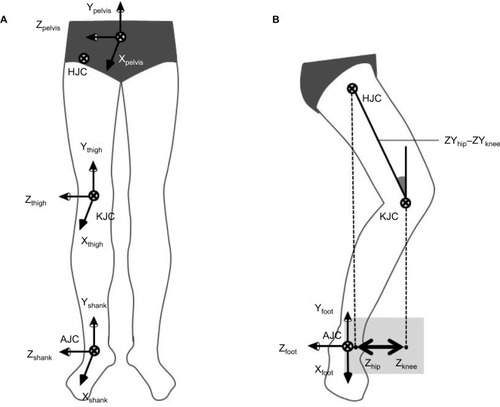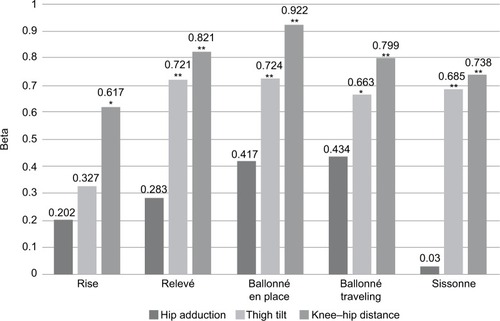Figures & data
Table 1 Averaged values of four kinematic parameters during landing phase and maximum value of knee flexion angle during the landing phase
Figure 1 (A) Anatomical coordinate systems of the pelvis, thigh and shank segments; (B) depiction of the calculation of the thigh tilt and knee-hip distance variables.

Figure 2 Beta values from the linear regressions of the kinematic parameters (hip adduction, thigh tilt, and knee–hip distance) from the single-leg squat as predictors of the respective variable in the ballet movement. *p<0.05, **p<0.01.

Table 2 Correlations between the kinematic parameters and the turnout and knee flexion angles
